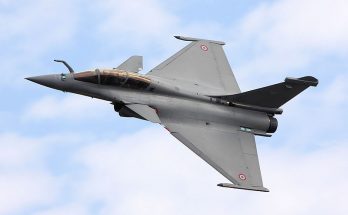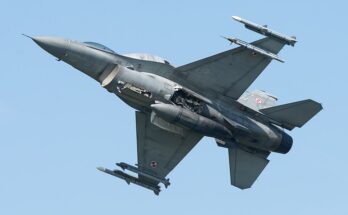
Azerbaijan announced an “anti-terrorist operation” in Nagorno-Karabakh on September 19, reigniting warfare with rival Armenia over the breakaway republic’s political future. The announcement coincided with shelling along the contact line, as well as explosions in Stepanakert, the region’s capital.
Calling Armenian troops in Nagorno-Karabakh a “grave threat to regional peace and stability,” the Azeri Ministry of Defense said in a statement that the Azeri military operation aims “to disarm and secure the withdrawal of formations of Armenia’s armed forces from our territories,” as well as “neutralize their military infrastructure.” Ultimately, Baku is looking to “restore the constitutional order of the Republic of Azerbaijan.”
The Azeri Ministry of Defense subsequently published footage it claimed showed the destruction of Armenian armored vehicles and a radar station. The Ministry of Defense said it would use “high-precision weapons” – such as loitering munition drones – to carry out strikes.
Following the start of Azeri military operations on Tuesday, the Armenian Ministry of Foreign Affairs accused Azerbaijan of continuing a policy of “ethnic cleansing,” rejecting the Azeri MoD’s “absolutely false and reprehensible propaganda.”
The resumption of fighting follows a war three years ago, which kicked off in September 2020 and lasted until a Russia-brokered ceasefire that November. Though Stepankert remained in the hands of the pro-Armenia separatist government under that agreement, Azerbaijan came out of the 2020 war with the upper hand in the conflict, confirming its battlefield gains while exerting control over the main road leading into the regional capital.
The 2020 peace agreement essentially froze the war in place, prompting immediate concern that another round of fighting would kick off. Last December, Azeri forces began blockading the road, cutting off the breakaway republic from Armenia. The blockade has remained in place ever since, even after a U.N. rebuke. Meanwhile, both sides have engaged in skirmishes throughout the uneasy peace. In recent months, rumors of a pending Azeri operation had grown, stemming from a buildup of Azeri troops along the contact line and suspected arms shipments into the country.
Russia has typically acted as the region’s primary security guarantor, but with its own war ongoing in Ukraine, Moscow’s attention to Caucasus affairs has receded, despite having deployed 2,000 troops to the region to monitor the 2020 agreement. As the ceasefire it helped broker crumbled, Russia’s Ministry of Foreign Affairs issued a statement on Tuesday calling on the two sides to “end bloodshed” and “return to a peaceful settlement.”
Armenia is part of the Russian-led Collective Security Treaty Organization (CSTO), which mimics NATO in extending mutual defense commitments to its members. In practice, the CSTO as an organization has been derelict on the subject of Nagorno-Karabakh, avoiding involvement in the 2020 hostilities entirely. Individual members, particularly Russia and Belarus, have also sold significant amounts of military hardware to Azerbaijan. In the years prior to that conflict, President Alexander Lukashenko shrugged off Armenian complaints of the sale of Belarusian-made Polonez multiple rocket launchers to Azerbaijan, commenting that he also offered to sell it to Armenia.
Annoyance with the CSTO has led to Armenia’s leadership hinting that Yerevan could leave the alliance. Armenian troops skipped joint exercises in Kazakhstan last September and in Belarus earlier this month, noticeably choosing to conduct a joint exercise with the U.S. called “Eagle Partner” instead. The drills with the U.S. only involved a few dozen American service personnel, but the message sent by Armenia was not missed in Russia.
Sounding off on his country’s frustration with the CSTO, Armenian Prime Minister Nikol Pashinyan said in May, “If Armenia decides de jure to withdraw from the CSTO, it will happen when Armenia records that the CSTO has withdrawn from Armenia.” In other words, from the Armenian point of view, if the alliance has already abandoned Yerevan, why should Yerevan keep up the appearances? The trouble for Armenian foreign policy strategy is the geographic context – it is surrounded on two sides by Azerbaijan and the latter’s close partner, Turkey. While the CSTO hasn’t come to Armenia’s rescue, no other country or alliance will, either, giving Yerevan few options but to go back to Moscow.
Military markets analyst, covering Eurasia, Middle East, and Africa.




